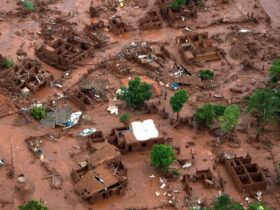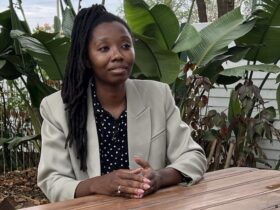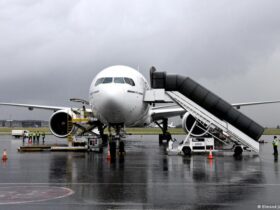Tensions between Thailand and Cambodia are not going away any time soon as a fresh round of firing broke out along their disputed border this week.
Clashes between Thai and Cambodian troops on Wednesday came two days after a Thai soldier was hit by a landmine while on border patrol.
The Thai government has accused Cambodia of laying new landmines in the area – a charge that Phnom Penh denies.
Bangkok also announced it was suspending honoring the terms of a ceasefire agreed by both sides at the end of July.
That ceasefire agreement – which was brokered by Malaysia, China and the United States – provided a shaky peace after five days of cross-border fighting that involved ground troops, artillery and jets.
At least 48 people were killed in the fighting and an estimated 300,000 civilians were temporarily displaced.
Why is there more stress?
The cease-fire agreement – known as the Kuala Lumpur Peace Accord – was signed by both sides in the presence of US President Donald Trump on the sidelines of the ASEAN summit in Malaysia in October.
Trump had previously put pressure on Thailand and Cambodia by threatening to delay trade talks over US tariffs unless they agreed to stop fighting.
Barring a weak agreement, tensions remained high.
That’s because the deal offers no way to resolve the underlying bitter territorial dispute, said Tita Sangli, a Thailand expert at the ISEAS-Yosof Ishak Institute in Singapore.
“The peace agreement was always on shaky ground, largely shaped by external interests and marked only by demonstrative confidence-building,” he told DW. “Nothing concrete was done to resolve underlying regional disagreements,” the expert added.
Is the conflict spreading?
A Cambodian man was reportedly killed and three others injured in Wednesday’s shooting.
It happened near Prey Chan village in Cambodia’s northwestern province of Banteay Meanchey.
The same village was the site of a violent but not fatal confrontation between Thai security personnel and Cambodian villagers in September.
Cambodian Prime Minister Hun Manet said the latest incident came after Thai forces engaged in “several provocative actions over several days aimed at provoking confrontation”.
Bangkok, for its part, alleged that Cambodian troops opened fire in a district in Thailand’s eastern province of Sa Keo and that the Thai side “fired warning shots in response.”
Thitinan Pongsudhirak, a professor of international relations at Chulalongkorn University in Bangkok, said the shootings showed that “the conflict is spreading, spreading.”
He believes that the ceasefire agreement “has for all intents and purposes expired and was weak to begin with.”
O Virak, founder and chairman of the Future Forum, a Phnom Penh-based think tank, said tensions and underlying grievances are “definitely not going to go away.”
He stressed that general elections in Thailand early next year and rising nationalist fervor in Cambodia will make it difficult for both sides to reduce tensions and divert attention from the border dispute.
“The best outcome would be to continue the status quo for the next three or four months,” Virak told DW.
What is the border dispute about?
The border dispute between Thailand and Cambodia is decades old.
The two countries share an 800-kilometre (500 mi) border that extends into sparsely populated areas.
Their competing territorial claims largely stem from a map from 1907, when Cambodia was under French colonial rule, which Thailand has argued is inaccurate.
There are also several temples near the Thai-Cambodian border that both countries claim – most notably, the historic Preah Vihear Temple, a 1,000-year-old Hindu site built by the Khmer Empire.
Cambodia and Thailand both claimed ownership and the case went to court.
In 1962 the International Court of Justice ruled that the temple was on Cambodian territory, which many Thais still believe today.
In 2008, when UNESCO was moving towards declaring it a World Heritage Site, the old controversy over the temple flared up again.
In 2011, there was a shootout over a dispute between Thai and Cambodian soldiers.
But the border had been largely peaceful until the clashes this July.
Need for clear demarcation of boundary
Virak said that for lasting peace, Thailand and Cambodia need to demarcate and accept the border.
He said, “There is hardly any agreed formula for lasting peace. That lasting peace requires independent, regional or international mechanisms that need to be accepted.”
Thittinen said there is “a lot of animosity” between neighbors.
“What is needed is for the political leadership to ask the people of both countries to stand up and Thailand and Cambodia should not go in this direction.”
Edited by: Srinivas Majumdaru






Leave a Reply